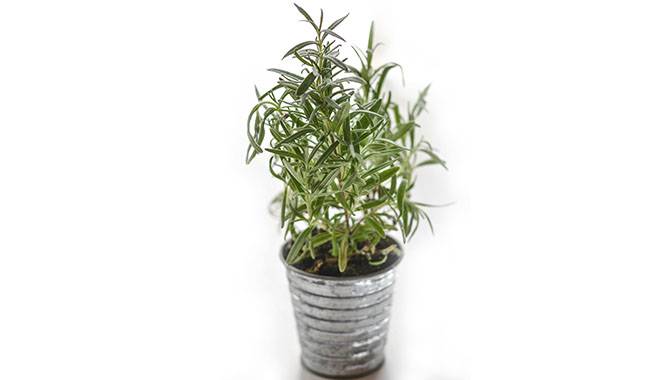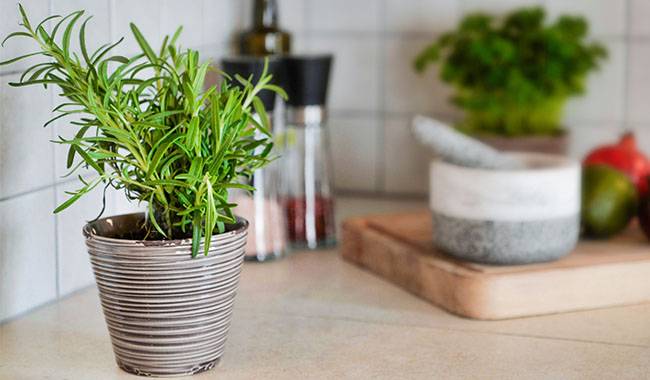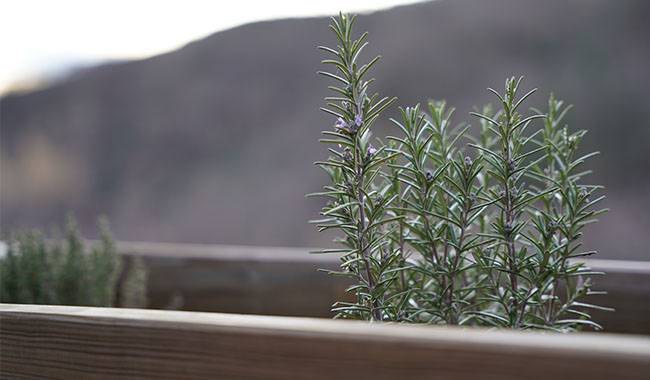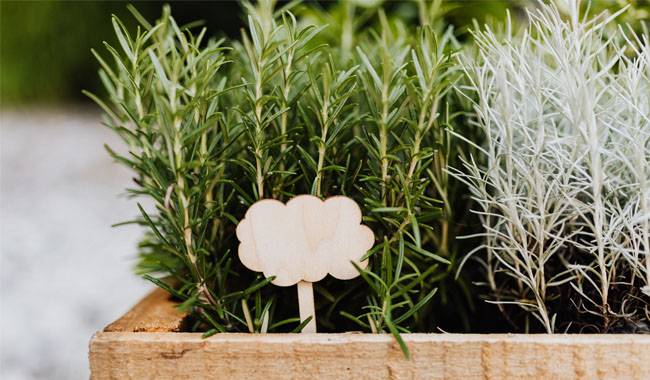
Those who enjoy cooking might often add rosemary as a seasoning to a variety of first and second courses. Its tart and slightly bitter flavor and aroma go best with fatty meats and fish.
In my opinion, a roast lamb without Rosemary is a “classic mistake”. They are sold in large supermarkets both in dried form and in herbal form.
In addition to flavoring in dishes, rosemary has some medicinal value, calms the nervous system, and is a powerful antibacterial agent.
So what do we gardeners care about because it only grows in the South? Well, not really.
You also have the opportunity to grow this plant. And in this article, let’s discuss more growing rosemary on windowsills and in open spaces.
ROSEMARY IN NATURE
First of all, it is worth setting aside all the “knowledge” that fills the Internet. Nothing is written about rosemary, except as a capricious and very demanding plant.
This is not the case at all. If you have ever been, or are in the south, where this evergreen shrub grows, pay attention to where and how it grows.
Usually, it is open, sunny and therefore hot and dry areas, in addition to which the soil is, frankly, “unpleasant”, light-colored soil (quite dusty), even mixed with stones …….
But rosemary grows and grows very well. Its adaptability to such difficult living conditions should be used if you decide to master this useful and beautiful plant.
As I said, rosemary (Rosmarinus officinalis) is a small shrub – in the wild usually up to 3-4foot (1-1.2 m), does not grow taller, but will be wider.
Its stems are covered with narrow, light-colored leaves that produce very little water when they are easily visible, and therefore do not require much water.
The small leaves are similar to lavender in some ways but are different in color. In many ways they are the same: in appearance, they give off a southern scent, and in their cultivation techniques.
HOW TO PROPAGATE ROSEMARY
To grow rosemary at home, you need access to planting materials. Of course, some people go to the garden store and buy ready-made plants, but this is not our method. We need to learn to go through all the stages with it, and then success will be guaranteed.
There are several ways to propagate rosemary: from seeds, cuttings, and rhizomes. Let’s start with the fact that we don’t have bushes, we can’t do transplants. So there are seeds and cuttings.
PROPAGATION OF ROSEMARY SEEDS
If you buy rosemary seeds, you should know that, as in the case of lavender, it is best to go through a 30-day stratification process (cold and wet treatment).
Simply, take a container with a hole in the bottom and fill it with a loose mixture, not necessarily a nutrient-rich mixture – such as 1:1 garden soil and neutral peat or washed sand.
Sow the seeds shallowly, wrap the container in a bag, and send it to a cold room (no light) for a month, such as a cellar or a refrigerator. The temperature should be between 37-41°F (3-5°C).
After a month of layering rosemary seeds in containers placed in a warm room – temperature of 64-77°F (18-25°C), preferably on a windowsill.
In 10 days to a month, rosemary seedlings should appear. After another month, the grown plants can be dispersed exactly into individual containers.
The most important thing is not to overwater the seedling. Between watering, the top layer of the soil substrate should become dry.
PROPAGATION OF ROSEMARY FROM CUTTINGS
For me personally, this method seems much easier. The only difficulty is obtaining cuttings of rosemary. They can be brought from the south, or try to root those plants sold in supermarkets: if they are not too wilted, they will take root.
Rosemary cuttings 4-6inch (10-15 cm) long, cut from the top of the branch, remove the leaves underneath (be sure to leave the tops) and simply place them in a jar with water.
There should not be a lot of water, about 1.2-1.6inch (3-4cm), and as the water evaporates, it will need to be replenished.
Water should not take tap water, chlorinated water, and soft water – rainwater, from a well or from a filter. Roots will be present after 2-3 weeks at 71-77°F (22-25°C).
Interestingly, no matter how many times I let rosemary root, the same thing happened each time: roots emerged faster and developed more actively on some plugs, while the roots “slowed down” on others.
Why does this happen? I don’t know, because the cuttings were taken from single shrubs, which rooted under the same conditions, but differed very much. But nevertheless, all cuttings will root sooner or later.
It is very important here that they are not allowed to grow strongly in water. As long as the roots are small, no more than 0.2inch (0.5cm), plant only the already rooted cuttings in a container with soil, so that they can root better and faster.
The first stage has passed. Now there are two options – either you grow rosemary in the open ground or in containers on the windowsill.
GROWING ROSEMARY IN THE GARDEN
When planting in the open ground, it is worth noting that rosemary is a southern plant that does not like cold temperatures. So the scripture says. But here are my personal observations.
Rosemary bushes planted under the south wall of the house survived a winter last year when temperatures dropped to 5 to -4°F (-15 to -20°C). But during a particularly bad frost, I covered them with several layers of agricultural foam.
It didn’t snow this winter, but the temperature didn’t drop below -14°F (10°C) and the bushes felt nice and completely uncovered.
As a rule of thumb, you shouldn’t fertilize or water heavily under rosemary. Yes, in the summer you’re over “care” will cause the bush to grow aggressively, but this is fraught with poor overwintering and frost damage.
If your climate allows it, then plant rosemary in the open, but under the protection of a building to avoid the cold winter winds.
Again, a reminder: although I grow rosemary outdoors, I always have a rosemary tree or two overwintered in containers in case the winter is unusually cold and my favorite rosemary might die.
GROWING ROSEMARY OUTDOORS
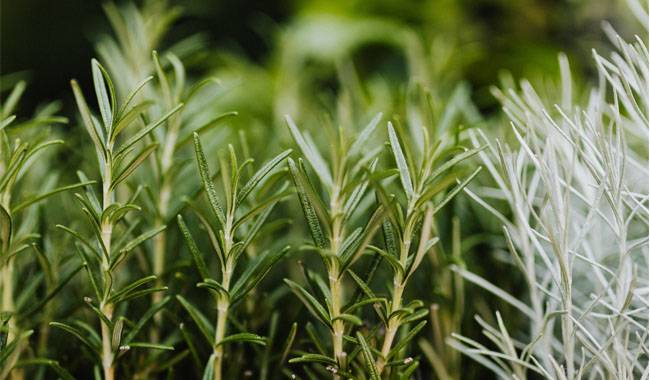
The main impact on rosemary growing on a windowsill is overcare. A paradox? But when you start dealing with dying seedlings from a familiar source, it is usually overwatering and overfertilizing.
Think back to the beginning of this article. Rosemary is a hardy, drought-tolerant plant that can grow in poor soil. Give it such conditions and you will be able to gather a year-round “harvest” of delicious spices from it.
It is worth keeping rosemary in a cool, bright room with a temperature of 46-53°F (8-12°C) for at least two months during the winter, although this is not absolutely necessary.
What is important? Rosemary prefers neutral or slightly alkaline soil and full sun. Make sure you plant the pot in full sun from spring to autumn (don’t forget to water it, as it is still a pot).
The more sunlight a plant gets, the more fragrant its greens will be.
How do I collect the “harvest” and what do I do with it? To season it, you need to pluck (cut off) the topmost tender leaves. This helps the bush to start branching and grow more aggressively.
Oh, and one important little detail, plant rosemary as close to the kitchen as possible, at a distance from it. If that’s not possible, you can stock up on rosemary. Here are a few recipes that I use.
USING ROSEMARY IN COOKING
Rosemary vinegar
I like to make different kinds of vinegar and then use them in salads, dumplings, etc. Heat a cup of apple cider vinegar to 122-140°F (50-60°C), pour in fresh rosemary leaves, you can add a few chopped garlic cloves and a few peppercorns.
Let it sit in a closed container in a dark place for 2-4 weeks.
Rosemary oil
Because it is better to take the dried leaves of rosemary (fresh ones will later become moldy). The jar is stuffed with rosemary and poured with good vegetable oil. For a full southern effect, it is best to use olive oil. This is a great salad dressing.
Rosemary salt
Grind sea salt in a mortar or in a blender with rosemary leaves. Add lemon and orange zest. Be sure to spread in a thin layer on a tray and dry properly.
Use as common salt in a variety of dishes, especially sprinkled on cooked seafood (e.g. shrimp).
You can also decoct rosemary and add it to the bath as an after-shave lotion for aromatic lamps …… All in all, there are many interesting and useful things you can do with rosemary.
Therefore, I highly recommend trying it. Just run your hands over his branches and feel this southern and so inviting to us scent – which is already a lot!
Rosemary plant, you will not regret it!




